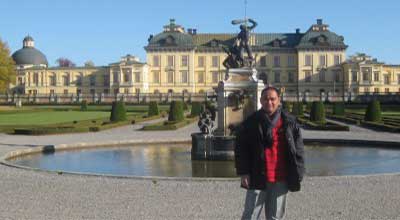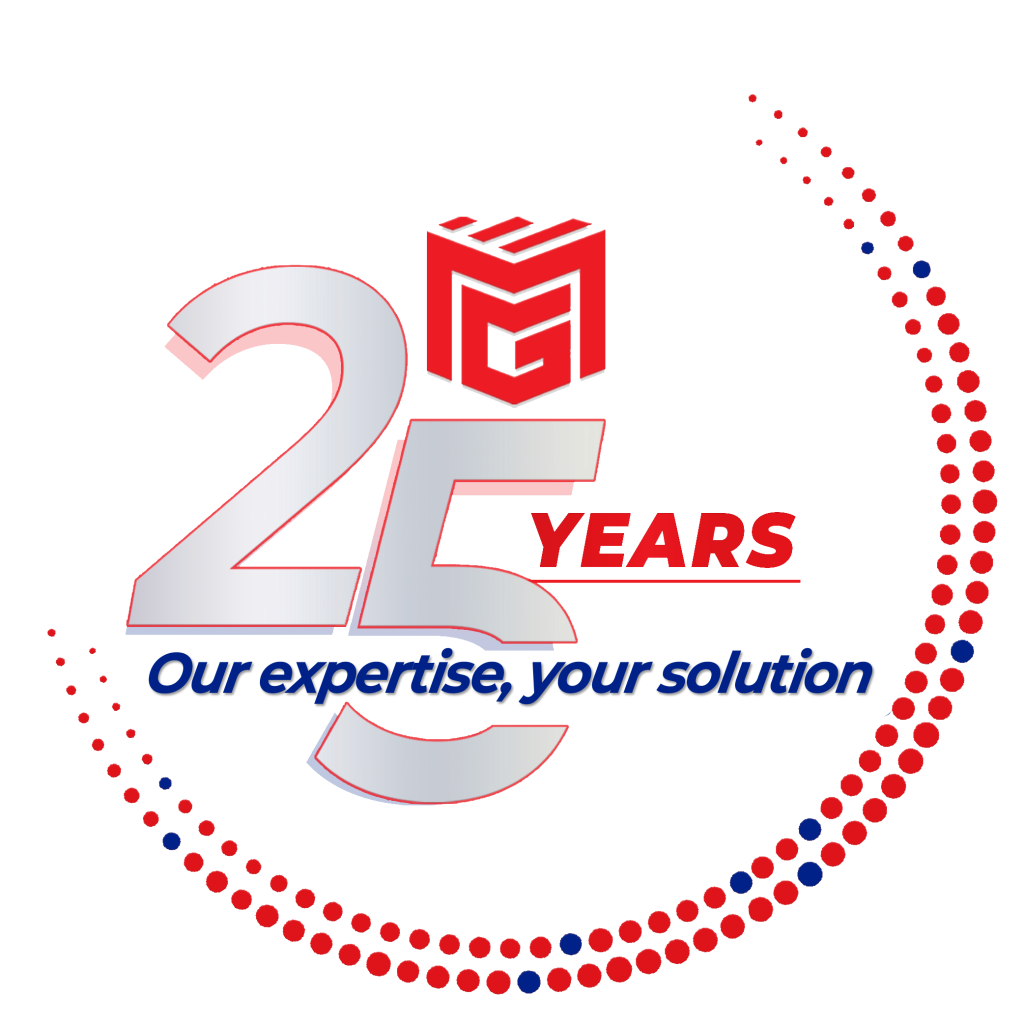
In a fast changing world, business leaders are at the forefront of strategies and transformations. That is why the Swedish International Development Cooperation Agency (SIDA), a government agency responsible for the major part of Sweden’s development cooperation, conducts programmes which aim to enhance managerial and leadership skills and cover subjects of strategic importance to economic and social development.
I happened to be one of the 25 selected participants (and the only Filipino) coming from Asian and European countries for the SIDA-sponsored Advanced International Training Programme in Strategic Business Management. The programme is designed for top managers and / or directors of middle-sized companies. It is about promoting sustainable growth and development of the participants’ managed or owned company, the business community, society, and individuals by developing effective innovation systems. The overall objective of the training programme is to contribute to the renewal and the development through management change in the participant’s home countries. The countries represented included, Albania, Armenia, Bangladesh, China, Georgia, India, Kosovo, Philippines, Serbia, Sri Lanka, Turkey, Ukraine, Vietnam and West Bank & Gaza.
While in Stockholm, we worked on the Strategic Business Plan throughout the three weeks together with other participants and supported by the ÅF Consult (a premier listed consulting company in Europe) and the topnotch faculty with significant international experiences. We also prepared and made presentations during our three-week stay.
Before the start of the programme, a virtual web-based classroom was opened for all participants that allowed us to communicate with the other participants, the Programme Management, faculty, and resource personnel. Varied information was also made available to help us prepare for the training. The Virtual Classroom was our main tool for information, document sharing, and communication before, during, and after the programme.
During the first week, the theme was Strategic framework. This was geared to intensify the perceptive of the corporate growth pattern, to identify the significant factors behind success and failure, to analyze competitiveness of products, services, and production flows, to establish the position in complex value chains, to assess market dynamics, and to identify the key resources of the company.
On the second week, the theme was strategic planning which dealt with formulating the vision, mission, and objectives, identifying key markets, products, and services, determining the required resources, and assessing the leadership and governance for sustainable growth of the company. Managerial, leadership and business tools were included in the strategic framework. Guest lecturers on Corporate Social Responsibility, Commerce and Industry of Stockholm, and Community-based minority micro finance provided a concrete three bottom-line (planet, profit, and people) business framework.
On the third week, the theme was implementation and change management. Making the strategic business plan become reality was discussed. The other drivers for and resistance to change, the first concrete steps towards new markets, customers, products and services, strategic alliances, financing and ownership issues, and of course the risk involved were tackled. A follow-up seminar was later conducted at Concorde Hotel, Kuala Lumpur, in 30 March – 3 April, 2009, for the presentation of “early wins” based on the Business Plan. Aside from the original participants, the senior officers of our respective organization who are the key players in the business plan implementation also participated in the follow-up seminar.
Upon our arrival, we checked in at Rica Hotel Stockholm, a modern and centrally located hotel which is just a walking distance to ÅF, Fleminngatan 7 where the seminars and trainings were held. The ÅF Group is a leading name in technical consulting, with expertise founded on more than a century of experience. They offer highly qualified services and solutions for industrial processes, infrastructure projects and the development of products and IT systems. They are also one of the leading names in certified third-party testing and inspection work and, in providing international trainings. Its parent company, ÅF AB, is listed on the Stockholm stock market.
A local transportation card was given to us, along with other relevant information and tourist brochures. The transportation card was our key to explore the historic city of Stockholm via train and public bus. Stockholm has a very efficient transport system.
We had a very limited free time during the programme because the seminars would start at 8:30 in the morning and end at 5:30 in the afternoon. But even so, I still had a chance to take a glimpse of the splendid sights of Scandinavia, particularly the fourth-largest country in Europe, Sweden. Scandinavia is a region in northern Europe that includes Denmark, Norway, and Sweden. Through a tête-à-tête with some locals I met, I learned that its name was taken after the province of Scania in southern Sweden.
We went via train to the Gothenburg located on the West Coast of Sweden for a company visit and facilitated work during the first weekend of the programme. We visited the Volvo Truck Corporation which is one of the leading producers of heavy trucks and transport solutions within the entire truck industry. We also dropped by the Ericsson Group Headquarters, the world-leading provider of telecommunications equipment and related services to mobile and fixed network operators. And finally we went to visit Mackmyra Swedish malt whisky Distillery. Mackmyra Svensk Whisky AB is an unlisted company owned by around 2,000 shareholders in Sweden and has a very promising corporate growth.
We got on a city sight seeing bus that took us on a tour around the City of Gothenburg. Being the second largest city in the country, Gothenburg is a vital part of Swedish industry, education and culture, business and shipping. There, we stayed at the Gothenburg’s premier hotel, the internationally known Radisson SAS Hotel. It is situated on Gothenburg’s attractive main boulevard, near the cultural center. It’s a sophisticated hotel with a fresh and fashionable ambience.
The next weekend, we were also given the opportunity to get to see some of Stockholm. Stockholm is the capital and the biggest city of Sweden. It is the center for business and cultural life in Scandinavia. Stockholm is one of the most beautiful capitals in the world. Looking out of my room window, I still cannot believe that I was actually there; in this city built on 14 islands connected by 57 bridges which remind me of the fairytale land I see in movies that my children would watch over and over. The beautiful buildings, the greenery, the fresh air, and the proximity to the water are like nothing I have never seen before. I was amazed with the rich cultural life of Stockholm which offers a wide selection of world-class museums and attractions. In fact, Stockholm holds the world record for having the highest number of museums, one of which is the Nobel Museum which illustrates a century of creativity and houses of the Nobel Prize winners. We saw the royal guards marching out side the Royal Palace on our way to the docks where there are also sight seeing ships, yachts and other sea vessels.
We also went to “Vasamusset in 1628,” the highly-decorated warship; Vasa sailed from Stockholm on her anticipated maiden voyage and sank. However, three centuries later, in 1961, Vasa was discovered and salvaged, and is now the world’s only preserved 17th-century ship. It has been converted into a museum. The cleverly constructed museum allows one to view it from six levels.
Most of the city’s attractions can be reached on foot, so we went on a stroll and took some snapshots here and there to have a little piece of this wonderful place back home with me.
Another “must see” place in our tour list is the Drottningholm Palace which is just splendidly made. The current Swedish royal family has used Drottningholm as their primary residence since 1981. Since then, the Palace has also been guarded by the Swedish Military in the same fashion as Stockholm Palace. It has been added to the It is a United Nations Educational, Scientific and Cultural Organization (UNESCO) world heritage site because it is the best example of a royal residence built in the 18th century in Sweden. The gardens and park areas surrounding the castle and its buildings are some of the main attractions for tourists who visit the palace each year. My favorite is the east view façade.
Night came and everyone was very excited to experience the nightlife in Sweden so we went bar hopping. We enjoyed a few shots of Swedish wine and danced to the peculiar yet enticing music. Those were just the tip of the Swedish culture, one of which captivated me the most was the Swedish cuisine! For us Filipinos, a meal would never be complete without rice. There, people eat mostly vegetables and meat. Their dishes are simple and healthful. They are characterized by a sense of practicality and economy. At first, I was a bit hesitant to try eating their food but I found it to be a really good dish to taste though it is nothing like the sophisticated French and Italian cuisine. I easily got used to it but I still miss the rice. In Sweden, it is considered impolite not to finish the food you have on the plate. I served myself most of the time so, I made sure that I put only enough food on my plate that I could consume.
Sure, the adventure that came with the training was more than what I expected it to be but I just could not get enough of Scandinavia just yet. After the program, I stayed for another week with my family friend, Tita Faye Diomaro Agerskov (married to Tito Palle Agerskov, Danish by birth) in Mariestad, a provincial city situated on Lake Vänern. The largest fresh water archipelago in Sweden lies within the city that is why it is visited by many tourists in summer. It was autumn when I went there, the fallen leaves colored the whole place brown, and it was so cold that I have to wear thick clothes, a bonnet, a scarf around my neck and gloves most of the time. It may always be cloudy in that place but its weather can never stop me from exploring its natural beauty. Tita Faye and her husband took me to the Valkommen Till Ekudden for some nature tripping; then we went to visit old churches (one church was built during the 15th century), and farm places. For the business flavor of my trip, Tito Palle and I visited the Volvo Engine Plant and the Electrolux Headquarter in Mariestad. My impression – perfectly high-tech manufacturing facilities!
I also spent some time with my Tita Faye’s friends. For the love of cooking, I intently observed Tito Palle’s Swedish-style, Swedish food cooking. I learned two and I prepared them for my family and staff as soon as I got back to the Philippines.
Being in Scandinavia is one of the best things that ever happened to my life but as what the royalties always say, “duty calls,” and so with my duties I must get back.

